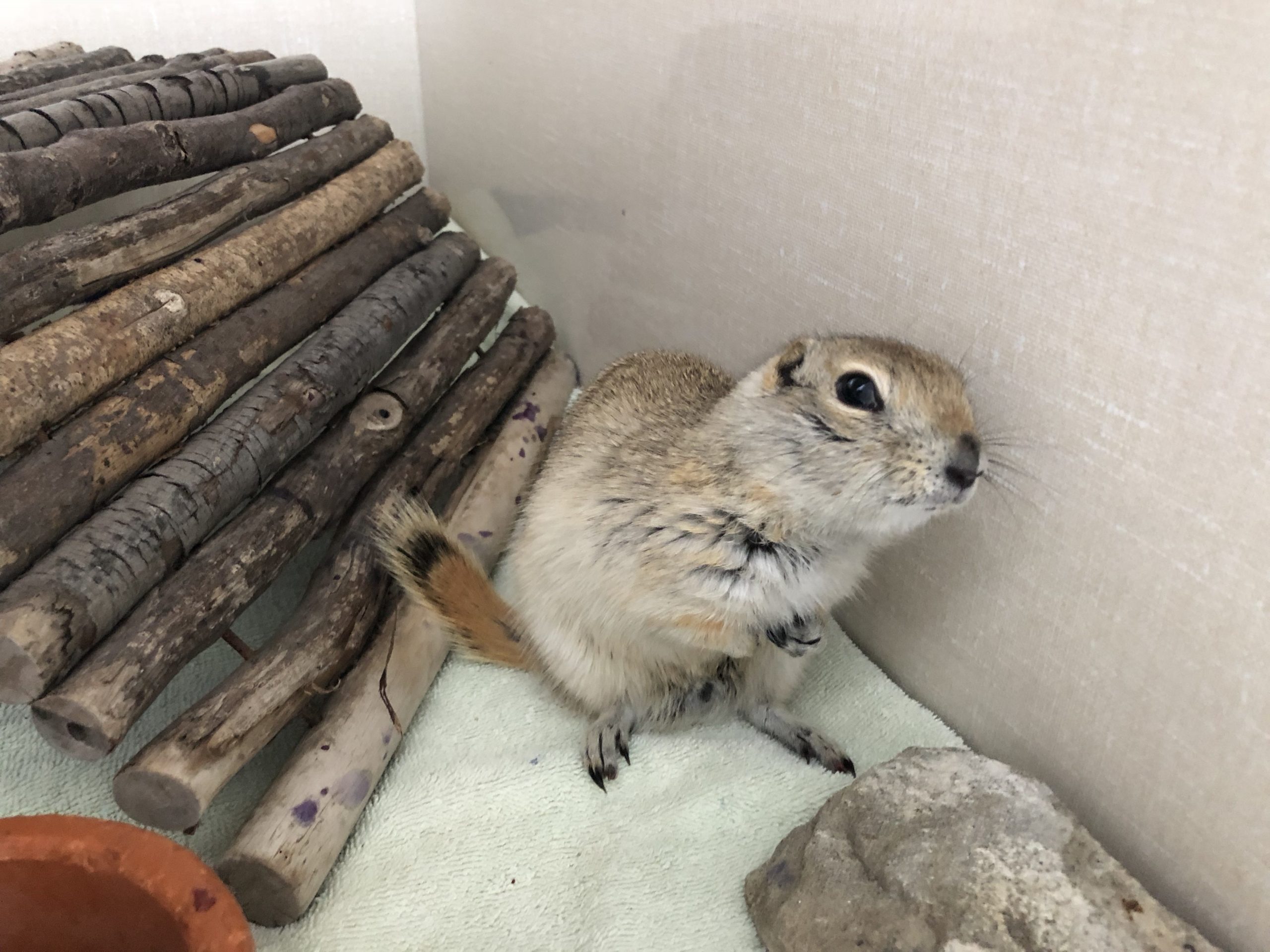Did you know that the Richardson’s ground squirrel uses an ultrasonic alarm call to warn its fellow colony members that danger may be approaching?
The Richardson’s ground squirrel, also referred to as a gopher, prairie gopher, yellow gopher, flickertail or picket pin, can be found all over Alberta, Saskatchewan, Manitoba and into the United States. This ground squirrel likes to keep its burrow in sight at all time, hence why they can be found in pastures and parkland, away from bushes and other more dense shrubs (City of Calgary).
Richardson’s ground squirrels live semi-communally, as a female will only tolerate the presence of other females that to whom she is closely related (Wikipedia). These ground squirrels will group their burrows closely together.
A favourite prey of many hawks, the Richardson’s ground squirrel has more than one method for warning their fellow colony members that danger may be approaching. When they sense danger, they may produce an audible alarm call, or an ultrasonic alarm call. These ultrasonic calls communicate very specific information, and studies have show that the type of call may vary, depending upon the predator. The Richardson’s ground squirrel is able to discriminate among callers based on the call, which is around the frequency of approximately 48 kilohertz, far too high for humans and, more importantly, many of their predators to hear (New Scientist).
When scientists studied the response of fellow Richardson’s ground squirrels to one of these calls, they found that the squirrels recognized the calls as a warning, and were visibly more vigilant, scanning the area for predators (New Scientist).
You can recognize the Richardson’s ground squirrel by its dark brown upper side and tan belly. They have shorter, less bushy tails than other ground squirrels, and small, short ears that can look more like holes. The next time you stumble across one, try to notice if you can spot its mouth or throat moving. If so, and you hear no sound, they might just be warning their colony mates with their ultrasonic call about a potential predator – you!
The Richardson’s ground squirrel shown in the image above is currently recovering at AIWC after suffering head trauma.
References and Further Reading
“Gophers”. www.calgary.ca, 2017: https://www.calgary.ca/CSPS/Parks/Pages/Planning-and-Operations/Pest-Management/Gophers.aspx. Accessed 26 Mar. 2018
“Richardson’s ground squirrel”. www.en.wikipedia.org, 25 Mar. 2018: https://en.wikipedia.org/wiki/Richardson%27s_ground_squirrel. Accessed 26 Mar. 2018
“Ground squirrels scream ultrasonic warning”. www.cbc.ca, 28 Jul. 2004: https://www.cbc.ca/news/technology/ground-squirrels-scream-ultrasonic-warning-1.503012. Accessed 26 Mar. 2018
“Ground squirrels ultrasonic squeaks revealed”, Muir, Hazel. www.newscientist.com, 28 Jul. 2004: https://www.newscientist.com/article/dn6216-ground-squirrels-ultrasonic-squeals-revealed/. Accessed 26 Mar. 2018






